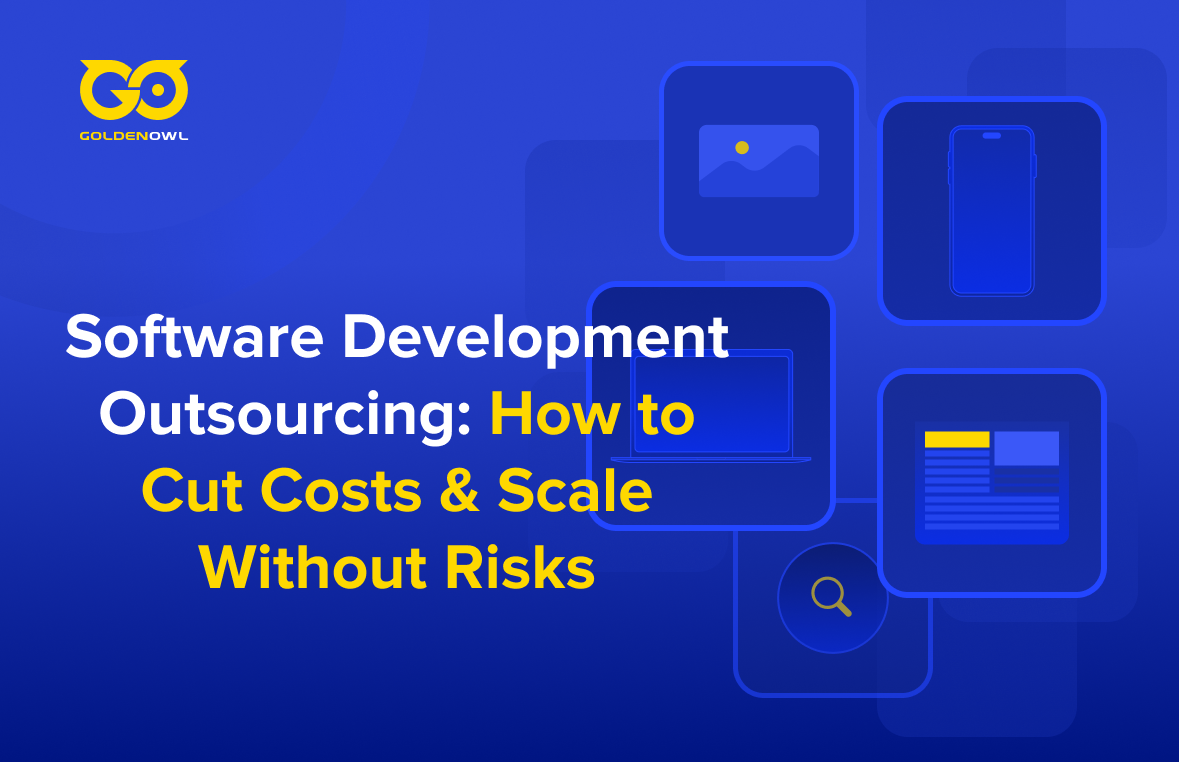The trend of outsourcing software development companies to save costs and reduce the growing work pressure in many businesses increasing every day. If you are a business owner who wants to learn what a software development process looks like and control the entire process, the following article is for you.

Understanding what software development process is
The Software Development Process, often referred to as the software development lifecycle (SDLC), is a meticulous journey from concept to implementation, aiming to bring a product to market. This iterative process aligns with real user needs, simplifying user objectives. Let's delve into the intricacies of this dynamic and essential lifecycle.
In particular, there are 3 basic types of software:
- System software: provide the operating system, drive management, etc.
- Programming software: providing tools for creating code, interpreting, debugging, generating code, and so on for programmers.
- Application software: such as data management software, media player, security program, etc.
A step-by-step guide on how to conduct the software development process
Any project needs to be planned, divided into phases, and organized in a logical order. This order is called the software development process.
Building a software development process is a complex and challenging task because, for every organization, every business will have a different approach to the project. Most software development processes consist of 4 main activities:
- Specification or requirement: identify the major software functions that the business is planning to build, as well as the limitations they set for the process.
- Design and implementation: the development team deploys software according to predefined specifications.
- Verify and validate: ensure that the software is being developed in accordance with the specification and meet the needs of customers in the business requirements.
- Maintenance and scaling: maintains, modifies, and replicates the software to meet changing consumer and market requirements.
These main activities are flexibly allocated and implemented according to project requirements. Next, let's find out how these activities are often arranged into 7 specific steps!
1. Planning
In the first phase, the software development outsourcing company will work with project managers to discuss human resources, project planning, capacity planning, and cost estimation. This is the biggest step affecting the entire software development process, ensuring the success of the project.
2. Request analysis
The software outsourcing company, the business and development team need to clarify the business requirements of the project to help the product reach the right target customers. Product managers, software architects, and software outsourcing companies work together to extract key business processes and decide which cases to automate or optimize by software.
3. Software design
Once the project requirements are , software developers will design the structure for the application. The design process consists of several stages. These stages' objective is to compare and produce the best results.
4. Programming
Software developers will code the software according to the architecture discussed. Project owner and software development company need to constantly communicate with each other throughout the process to ensure that the project is on track. The result of this phase is the software is complete and ready to functionally tested.

5. Testing
Testing is the key to every development process because it determines the outcome of the whole project. Software developers check code quality, performance tests, and security checks. Professional software outsourcing companies often experiment with automated integration tools to get the software ready for deployment.
6. Implementation
This is a period of releasing the software that has built into practice to consider the success of the project. In addition, the inspection and recording of problems arising for the next maintenance step are often conducted in parallel.
7. Maintenance
This is the monitoring phase to ensure that the software is working properly. Ongoing maintenance involves monitoring, bug resolution, user feedback incorporation, security checks, feature enhancement, and documentation updates. If they occur an error, the software developer will resolve and guarantee not to cause other problems.
Best Practices for an Effective Software Development Process
1. Waterfall Model: Striving for Perfection
A methodical, step-by-step approach tailored for projects with well-defined and stable requirements. Each phase is completed before moving to the next, akin to reaching for perfection in a linear fashion.
2. Agile Methodology: Embrace Change and Adapt
Prioritizes adaptability, customer satisfaction, and swift delivery through iterative cycles. Agile methodologies break down projects into smaller, manageable units, with each iteration involving planning, designing, coding, and testing.
3. Prototyping Development Model: Starting with the Basics and Iterating
Ideal for projects with uncertain requirements, this model involves crafting a basic prototype for initial usability and feasibility testing. The product evolves through iterative cycles based on user feedback, gradually reaching an optimized version.
4. Incremental Development Model: Taking It One Step at a Time
Combining structured planning with flexibility, this model is well-suited for large-scale projects. It divides the development process into smaller, manageable increments, allowing for better management of complexity and risk.
5. Iterative Development Model: Continuous Improvement at Every Step
A flexible methodology focused on gradual enhancement. It involves refining the product based on continuous user feedback, ensuring a perfect alignment with evolving needs. This iterative process contributes to the overall quality and user satisfaction.
6. Kanban Software Development Model: Visualizing and Scheduling for Efficiency
This methodology revolves around visualizing work, actively managing workflow, and implementing feedback loops for continuous improvement. Originating from lean manufacturing principles, Kanban emphasizes transparency and evolutionary change to enhance overall efficiency.
By exploring and integrating these diverse methodologies, software development teams can choose the approach that best aligns with their project's unique characteristics and objectives. Each methodology offers its own set of advantages, allowing teams to tailor their development process for optimal results.
Conclusion
Software development process is a complex and challenging process, requiring implementers to equip themselves with an experienced workforce. Through this article, we hope to help you learn more about the software development process and build the knowledge base for effective software development.
Golden Owl provides software solutions with actual processes, tools, and experimental features. Contact us now for advice.























